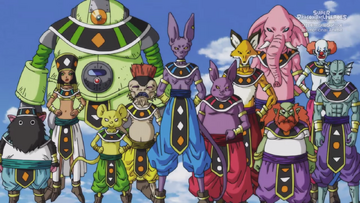The Gods of Destruction (破壊神, Hakaishin, lit. "Destruction God"), also called Destroyers in the Funimation dub, are very powerful deities who destroy planets, races, or threats that put the development of their respective universes at risk, as opposed to the Supreme Kais, the Gods of Creation, who create and fill planets with life, in order to maintain the balance of the universe.[1] Along with the Kais, they rule and oversee the formerly 18, currently 12 universes, with each universe having its own Destroyer.
Unlike the Angels and the Supreme Kai, with whom they work alongside, Gods of Destruction vary widely in species and are not naturally divine. Instead, natural mortals who become Gods of Destruction gain divine status upon being appointed.
Quick Answers

What is the role of the God of Destruction in the universe?

How do the Gods of Destruction maintain balance in the universe?

What are the differences between the Gods of Destruction and the Supreme Kais?

How many Gods of Destruction are there in the Dragon Ball universe?

What threats can lead to the intervention of a God of Destruction?

Overview
Originally, there was a God of Destruction for each of the then-existing eighteen universes until Zeno destroyed six of them, leaving only twelve at the time of their introduction in Dragon Ball Super. Once every millennium, the Kais and the Gods of Destruction go to each other's realms and hold a coordination meeting.[2] On some occasions, the gods can also come together to deal with threats to existence or stability of their universe or universes. Gods of Destruction, due to being significantly stronger than Kais by nature, are usually more capable of dealing with universal threats than the Kais themselves. However, they seem to have no obligation to heed the commands of Kais, and thus tend to be whimsical as to which threats to eliminate.
Despite their almost absolute authority, even the Gods of Destruction have restrictions. They are for example not allowed travel through time or allow anyone else to (though Whis can transport Beerus through time to the Time Nest where Chronoa resides if he wishes to speak with her or at her request as shown in the Xenoverse series). They are also prohibited from fighting each other unless requested or authorized in a safe area, as they can easily destroy their universes if doing so. In fact, if a God of Destruction violates these restrictions or isn't doing their job to the best of their ability, Zeno has the authority to remove or even erase them from the position and appoint a new Destroyer to replace them.
Personality
Though the Gods of Destruction may enjoy their duty, some going as far as to revel in it (like Beerus), they are not inherently evil, despite what their title suggests, as some can be somewhat benevolent (such as Belmod), and do not seem to revel in their destruction but instead use their powers to enforce "justice" in their own universe by destroying only planets or anything which they consider evil. Also, at least in the cases of Beerus and Champa, food is their natural way to calm down and socialize, with them going as far as becoming friends with mortals if they are pleased well enough, though they still remain serious and do not joke around when doing their job.
Also, unlike Angels, and like the Supreme Kais, they share the emotions that mortals possess and are prone to the same revolt and rage, as they were once mortal beings themselves, which may cause them to commit abuse of their power, injustice, evil, and tyranny. While the Gods of Destruction are generally fearless of deities and mortals alike, they are shown to respect Zeno and the Grand Minister due to their greater position and power. This fear causes them to ironically behave in a manner similar to how mortals and lower deities react when in their presence.

While Gods of Destruction may destroy any individuals that oppose them or causes them trouble through their actions, they may spare mortals whom they find useful even if they are evil, as Beerus tolerated Frieza and his empire despite Frieza being pure evil to the core. Similarly, though he was disgusted by Frost's true nature, Champa was willing to support him if he helped Team Universe 6 win the Tournament of Destroyers.
Gods of Destruction may tolerate such individuals due and only due to their power and ability to follow their instructions, as Beerus disliked the Saiyans mainly due to King Vegeta's stinginess and his being foolish enough to try and deceive him, instead of simply following his orders, as the Saiyan King had tried to keep the universe's most comfortable pillow for himself rather than deliver it as the God of Destruction asked, which likely contributed to Beerus' decision to order Frieza to destroy Planet Vegeta. Beerus, however, allowed the surviving Saiyans to live and even allowed Goku and Vegeta to train on his planet due to his seeing them both as capable rivals, although this was mainly due to knowing they had little desire to usurp or kill him and were unlikely to misuse their godlike powers, though he was not above threatening to destroy them when they did something to annoy him in order to keep them in line.
Additionally, even if they befriend mortals, Gods of Destruction are no more obligated to help them than their divine counterparts and some such as Beerus will even refuse to assist them on principle, though this is mainly for their benefit, as Gods of Destruction destroy mainly to encourage growth among the mortal population of their universe. In the anime, Champa felt no obligation to assist Frost if he failed, only willing to assist him as long as his power was an asset to him. Champa, however, had no problem with attempting to destroy all of Team Universe 6 once they lost the Tournament of Destroyers. However, some Gods of Destruction actually despise evil, such as Belmod and the manga incarnation of Sidra.
Some, but not all, are shown to occasionally be short-tempered, to the extent that even the Angels know to steer clear from their path when their lords are pushed to the breaking point.
Additionally in the manga, with Belmod planning to retire he was more willing to find a successor. Though Beerus shows no indication he plans on retiring, he has taken an interest in Vegeta's potential and even starts training him during the Granolah the Survivor Saga, even confessing the Saiyan Prince of his role in ordering Frieza to destroy Planet Vegeta. Through Beerus' training, Vegeta is able to achieve a new powerful form which he dubs Ultra Ego. However, this is partially motivated by a competition with Whis who has been training Goku in how to fully utilize Autonomous Ultra Instinct as his normal state, to determine which different discipline is superior, Ultra Ego or Ultra Instinct.
Relationships with Other Deities
The Gods of Destruction are linked to the Supreme Kais of their universe, and, if all of the Supreme Kais were to die, the God of Destruction would too, as a way to maintain the balance of the respective universe.[3] Only the deities themselves and their assistants possess such knowledge, and only few outside superior high ranks including mortals have been entrusted with this knowledge.[4]
The Gods of Destruction are less vulnerable than the Supreme Kais in that sense, since they can continue to live on, as long as even a single Supreme Kai exists in their universe, whereas the death of a God of Destruction would instantly kill all Supreme Kais, regardless of how numerous. This link does not extend to the Apprentice Supreme Kais, however, as Gowasu's death caused Rumsshi to die despite Zamasu still being alive.
Beerus, the God of Destruction from Universe 7, is the one who sealed Old Kai in the Z Sword.[2] His administrative zone includes planet Earth. Each God of Destruction has an Angel attendant, like Whis for Beerus and Vados for Champa.
Despite the life-link and status as a god, a God of Destruction is not obligated to show respect or treat his or her associated Supreme Kai kindly. Beerus, for example, constantly belittles his universe's Kais and even went so far as to seal away Old Kai. In the manga, Rumsshi threatens to kill his universe's Kai, Gowasu, if their summons to Zeno's palace was to berate their handling of Zamasu. Interestingly, while Beerus is careful to ensure no harm comes to his universe Supreme Kais, he never came into conflict with Kid Buu despite the Majin threatening to destroy them all on at least two occasions, though he was asleep on at least the second occasion.
In the manga, it is stated that all the other Gods of Destruction hold a grudge against Beerus because of his carelessness of falling asleep during Zeno's All Universe Hide and Seek Tournament, an antic that made Zeno furious and those Gods of Destruction had to quickly plan to alleviate his anger, a life-or-death decision that they would always hold Beerus responsible for.
Candidates and substitutes
Despite their immense power and longevity, Gods of Destruction are known to be capable of dying. Due to this, their Angel attendant will seek out and train potential replacements. The candidates do not have to be of a divine race as mortals are selected as candidates if they possess adequate power. The only known God of Destruction candidate (破壊神候補, Hakaishin kōho) in the main timeline so far is Top of Universe 11,[5][6] although before, Jiren was chosen, but turned down the offer. Goku and Vegeta of Universe 7 were also both offered candidate positions by Whis but refused the offer due to simply wanting to become stronger on their own. Gohan was also considered a suitable candidate by Whis, but Beerus declined, noting he has the wrong personality for the job.[7]
Candidates, once chosen and accepted, can take on the power of destruction with training from an Angel to control its power and godly ki.
Additionally, in the Xenoverse series, Whis seeks to train Time Patrollers mainly in the hopes of finding potential candidates to replace Beerus, though the Supreme Kai of Time lashes out at him for trying to headhunt Time Patrol personnel. During a New Parallel Quest, Whis secretly requests the Time Patrol's assistance in helping him scout potential candidates to replace Beerus in the distant future. Both Beerus and Whis work as Patroller Academy Instructors allowing the Future Warrior to train under them. In World Mission, in an alternate timeline there is a Universe 6 counterpart of Mr. Satan who unlike his Universe 7 counterpart is strong enough to be considered next in line to become Universe 6's God of Destruction.
Gods of Destruction do not always work alone in their destruction and sometimes can appoint someone else the duty of destroying, thus becoming an Agent of Destruction (破壊の代行, Hakai no daikō).[8] The only example of this in Universe 7 being Frieza, who prior to Age 739 was known to aid Beerus in destroying things, and was also told by him to destroy Planet Vegeta. Beerus also allowed Frieza to maintain a galactic empire which controlled 70% of Universe 7. In Universe 11, the Pride Troopers work under and are overseen by Belmod and, therefore, are also Agents of Destruction, though in their case, to destroy evil only. They also work with and even protect the Supreme Kai if need be. In the lead up to the Tournament of Power, Sidra had Universe 9's Assassins act as Agents of Destruction, gifting their leader with some Energy of Destruction to use.
Future Trunks' Timeline
As a result of the actions of Future Dabura and Future Babidi, all the Kais of Universe 7 have been killed, and by extension, Future Beerus. Also, it is revealed that Future Zamasu and Goku Black have killed the other Supreme Kais from all universes and, by extension, all of the Gods of Destruction, rendering the evil duo, both of them Kais, as the only remaining gods save for Future Zeno. Due to this, the Kais' roles changed radically, taking the Gods of Destructions' place in destroying worlds for their own evil/selfish goals.[4]
Gods of Destruction
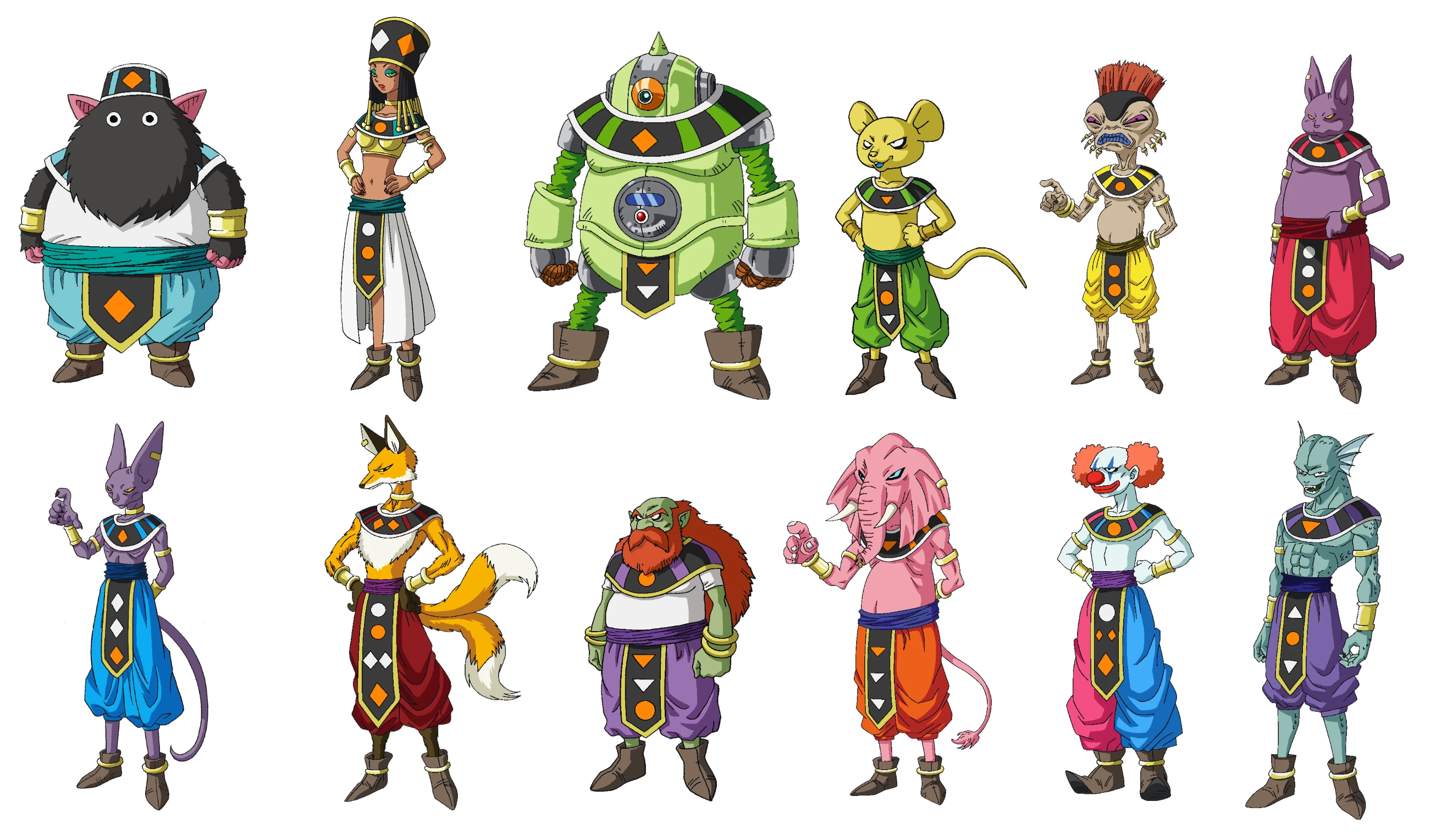
- Universe 1: Iwan
- Universe 2: Heles
- Universe 3: Mosco/Mule
- Universe 4: Quitela
- Universe 5: Arak
- Universe 6:
- Champa
- Mr. Satan (Universe 6) (candidate; time rift only)
- Universe 7:
- Universe 8: Liquiir
- Universe 9: Sidra
- Universe 10: Rumsshi
- Universe 11:
- Universe 12: Giin
- Future Gods of Destruction (all deceased in Future Trunks' timeline, but alive in the second Future Trunks' timeline)
- Future Beerus (former God of Destruction of Universe 7; deceased)
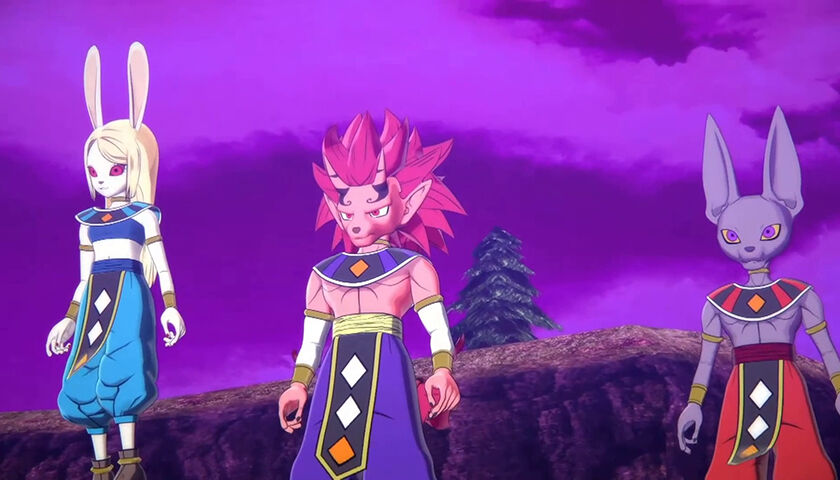
Fusions
- Gorus (Adult Goku + Beerus; EX-Fusion, Universe 7 God of Destruction/Saiyan)
- Kibeer Kai (Kibito Kai + Beerus; EX-Fusion, Universe 7 God of Destruction/Supreme Kai)
- Whirus (Whis + Beerus; EX-Fusion, Universe 7 God of Destruction/Angel Attendant)
Power
The Gods of Destruction are among the mightiest entities in the multiverse, strong enough to be universally feared, not only by mortals, but even by other Gods. While Gods of Destruction are incredibly powerful beings, they are not invincible, and can be defeated or even killed in combat. It is also possible for a mortal to surpass them in power - with Jiren of Universe 11 being the first known individual mortal to accomplish this rare feat.
Gods of Destruction possess the Aura of a God and their signature ability is the Hakai. Even with training from their guide Angel, the Autonomous Ultra Instinct ability is difficult for a God of Destruction to properly access, and only Beerus has shown any skill with it.
It appears that the lowest level of power required to even be considered as a qualifier to become a God of Destruction is the level of the Perfected Super Saiyan Blue form, as Goku was able to use an imperfect copy of Hakai in this form, Beerus noted Vegeta was strong enough to be a candidate for God of Destruction in this form, and Top - a God of Destruction candidate - rivaled users of this form in power.
Despite each Destroyer holding the same authority and standard powers as another, their individual might and combat ability can vary. Champa is implied by both Vados and Beerus to be weaker than the latter, Belmod (in the anime) and Quitela (in the manga) are said to have previously defeated Beerus in arm-wrestling, with Belmod also being referred to by Whis as being stronger than Beerus, though Beerus believes he wouldn't lose in actual hand-to-hand combat.

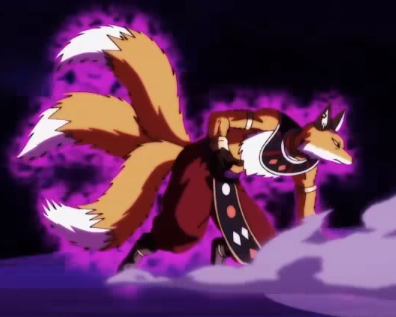
In the anime, all Gods of Destruction possess the potent "Power of Destruction". This power allows Gods of Destruction to "destroy" a particular object or being on contact without the need to fight, such as a planet or a criminal Kai as punishment. All Gods of Destruction also hold this power. This ability can even destroy non-corporal entities such as ghosts of deceased beings, as it is capable of obliterating their souls; however, they cannot destroy immortals. The Power of Destruction can take energy form whereupon it is known as Energy of Destruction - powerful energy ball that can be used for both destructive and defensive purposes. As shown by Sidra, a God of Destruction can grant some of their destructive energies to other beings. This ability is not absolute however, as powerful entities can resist, nullify or even manipulate the Energy of Destruction for themselves, as displayed by Frieza and Vegeta. Beerus himself has been shown blowing Sidra's Energy of Destruction away easily.
In the manga, beings who can use the God of Destruction's signature Hakai technique display this fact through wearing a special golden earring. Unlike in the anime where all Gods of Destruction can use Hakai, only a few display this earring and ability in the manga, namely: Beerus, Champa, Belmod, Rumsshi and Liquiir. Arak possibly wears multiple sets of these on his "whiskers", while it unknown whether or not Heles wears one.
Contrary to the Supreme Kais, Gods of Destruction seem to manifest their godhood in raw destructive power, while Supreme Kais manifest it in the ability to create and spread life across the universe. Due to the nature of their abilities, Gods of Destruction have much higher combat abilities than their counterparts.
A God of Destruction's greatest weakness is their Life Link to all active Supreme Kais of their respective universe. If all said Supreme Kais are to die, so will their respective God of Destruction. They also gain immense longevity of several million years when given the position of being God of Destruction. As the Life Link is their Achilles' heel, the Gods of Destruction tend to be protective of the Supreme Kais of their Universe and presumably helps ensure that they will work together especially when the life of their Supreme Kai is threatened, as well as keeping the Gods of Destruction from destroying them, as shown by Beerus choosing to seal Old Kai rather than destroy him. After the death of Future Shin and Future Beerus, Goku Black killed Future Gowasu and recruited Future Zamasu to enact their Project Zero Mortals, then killed the Supreme Kais in each Universe resulting in the deaths of the remaining Gods of Destruction.
Despite their power and position, the God of Destruction govern each of their universes in different and sometimes more effective ways, as well as working on improving the long-term development and evolution of their universe in a working relationship with the respective Supreme Kais. This effort helped some universes evade possible destruction in the Tournament of Power due to the better results of developing.
Gods of Destruction appear to have vast political power in their respective universes. An example in the anime being Frost asking Champa to have his crimes wiped free. Thus, it can be implied that a God of Destruction authority seems to go beyond just universal balancing, and they have recognized political influence. Interestingly, in the manga they are said to be able to eliminate anyone without due process. As a result, in the manga they are beyond the authority of mortal law enforcement such as the Galactic Patrol as any destruction and death they cause is lawful due to their power (both real and political) and divine status which presumably extends to their Angel Attendant given that Jaco overlooked the use of Temporal Do-Over by Whis under Beerus' orders during the Golden Frieza Saga though he may also have overlooked it due to its use leading directly to Frieza's second death.
Ironically, in the manga, it appears that the other Gods of Destruction who were spared from possible universal erasure are weaker in comparison to other Gods of Destruction of competing universes, as several of their attacks were ineffective against said Gods of Destruction, and they were later knocked out by the latter.
In Dragon Ball Fusions, EX-Fusions involving Beerus retain his position as Universe 7's God of Destruction. Additionally Kibeer Kai retains both Beerus' God of Destruction status and Kibito Kai's Supreme Kai status, while Whirus retains Beerus' God of Destruction status and Whis' Angel Attendant status. Any Freeform Fusions involving either Beerus and/or Champa also inherit their God of Destruction status. Also during the Timespace Tournament, Beerus asserted his authority as God of Destruction within the Timespace Rift first to stop the Time Breaker controlled Great Ape Broly after it revived following his battle with Tekka's Team and after Ultra Pinich destroyed the Timespace Rift and killed Super Saiyan Blue Goku, Beerus had Whis use Temporal Do-Over allowing to deflect Ultra Pinich's attack forcing him to flee in terror. Adult Goku and Vegeta stop Beerus from destroying Ultra Pinich as his fusees Pinich, Wanta, and Paprika are innocent as Cell and Frieza control the fusion.
In Dragon Ball Heroes, Gods of Destruction are shown to possess the ability to telekinetically throw small planets when using Super Star Break. They also seem to possess a form of cosmic awareness as they were able to sense disturbances in their respective universes caused by the Universe Tree.
Transformation
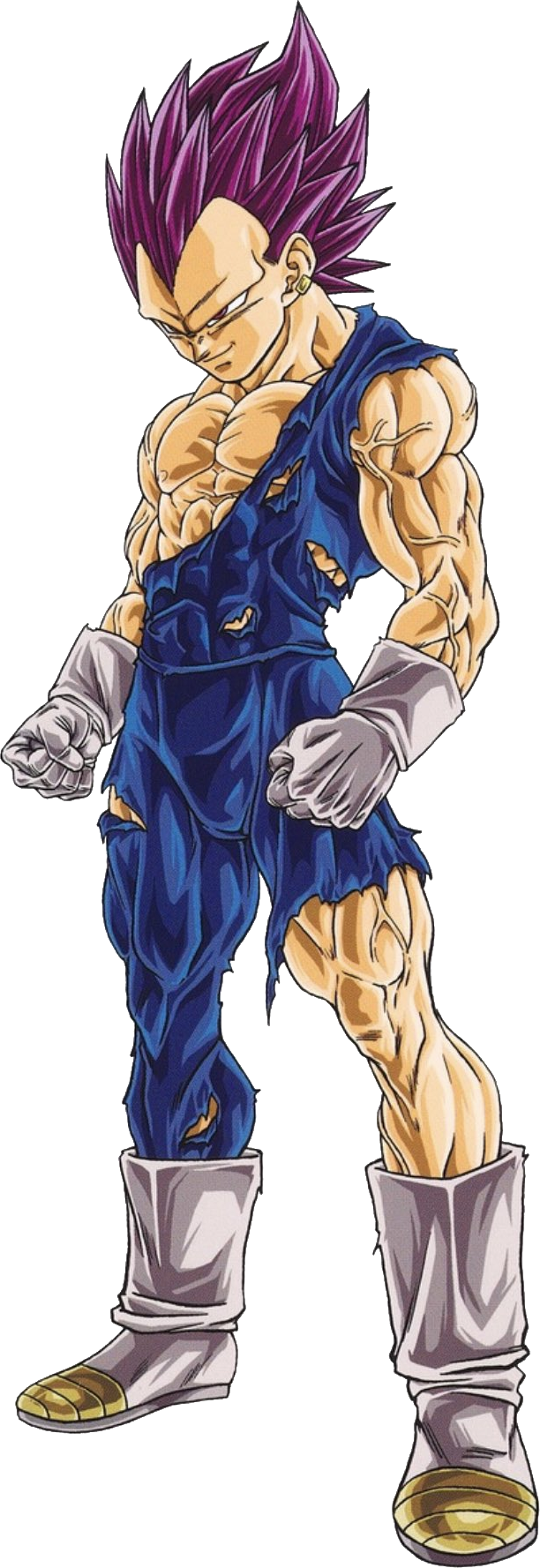
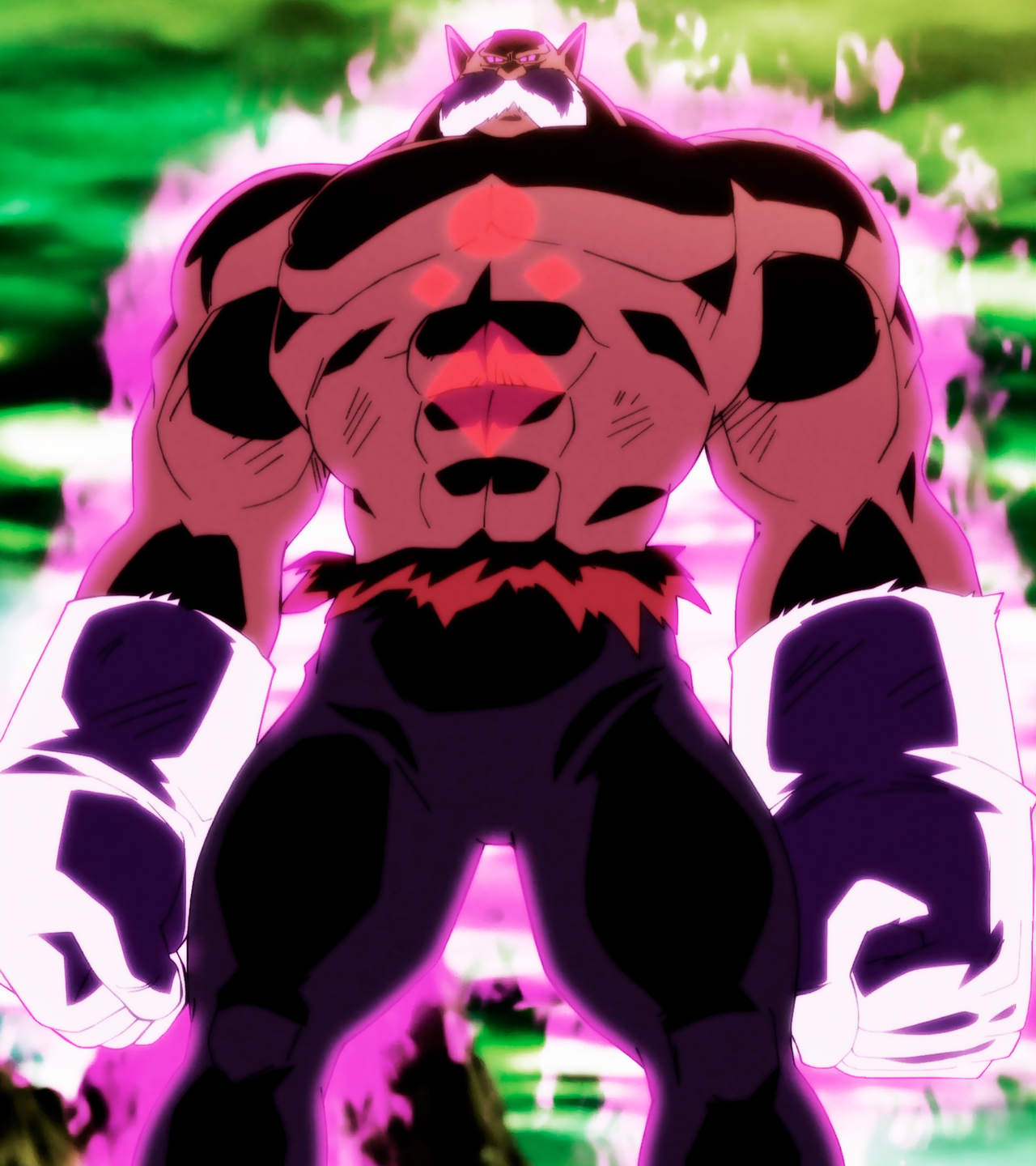
In both the manga and anime, a state is attained by one who has received God of Destruction training and has gained the ability to use the powers of one. In order to access this transformation, one must make the conscious decision to embrace destruction. This can also change the user's mentality making them sadistic in nature an putting the user at risk of being undermined by their own ego.
In the anime and Heroes manga, God of Destruction candidates are able to channel the full force of their Energy of Destruction, allowing them to access a Destroyer Form. In this state, in the case of Top, the user's body gains a large increase in muscle mass and definition. The user's skin tone becomes much darker and their sclera turn light purple. The user also gains a red symbol identical to the cuirass of a God of Destruction of a particular universe on their chest extending to the midsection. The user's aura is purple in color and completely made of Energy of Destruction, allowing anything it touches to be instantly destroyed, they can utilize Energy of Destruction for offensive and defensive purposes like coating their body in aura and strengthening their attacks in order to overcome other opponents. When the user is fully charged up in this state, the markings on their body turn a glowing purple color.
In the manga, those trained in the ways of destruction are able to use the Ultra Ego transformation. The user gains larger, more defined muscles, their hair becomes spikier, and their brow ridges become hairless and very pronounced, similar to that of Super Saiyan 3. They also gain colored eyes irises with visible pupils.
Trivia

- God of Destruction is a title ironically used by several other characters in the Dragon Ball franchise:
- Frieza - Although Frieza never claimed the title for himself, Roh once commented that Frieza was more of a God of Destruction than Sidra, who actually held the title, upon witnessing the tyrant's cruel nature and impressive power.
- Cell – A Bio-Android referred to as a "God of Destruction" in the Japanese title of the episode "Cell is Complete" (戦闘力無限大!! セルという名の破壊神誕生, lit. "Infinite attack power! A God of Destruction called Cell is born").
- Kid Buu – Was described like a God of Destruction by Shin. This is fitting as he came very close to killing all the active Supreme Kais of Universe 7 which would have in turn killed Universe 7's God of Destruction.
- Luud – A Machine Mutant worshiped as a God of Destruction by the Luud Cult, who is an antagonist in Dragon Ball GT. However, Luud is actually a false deity created by Dr. Myuu to gather energy for Baby.
- Syn Shenron – A Shadow Dragon who, upon reabsorbing the other six Dragon Balls, proclaims himself as a "God of Destruction".
- Gotenks – Calls himself a "God of Destruction" when formed in Dragon Ball Z: Legendary Super Warriors.
- Broly was called a "Destruction God" in Goku's mission to fight Broly, and the "God of Destruction" in Gohan's mission to fight him in Dragon Ball Z: Supersonic Warriors 2. There is also a Capsule Skill exclusive to Broly in Dragon Ball Z: Budokai 3 called "God of Destruction Body Wrap."
- Future Warrior - In Xenoverse 2, Whis will admit that he is impressed that a mortal could be so powerful, saying that the Future Warrior surpasses Super Saiyan God Goku in strength and may one day surpass Beerus himself, and offers the Future Warrior the job of "God of Destruction", to which Chronoa refuses to allow as she tells Whis she will not have him stealing any Time Patrol personnel.
- In Xenoverse 2 Masters Pack DLC, Whis mentions after the Future Warrior completes his training that "With abilities like yours, entry into the championship to decide the next God of Destruction wouldn't be out of the question." indicating that there may be some sort of tournament or competition involved in selecting a God of Destruction's replacement.
- All the Gods of Destruction and their attendants are named after alcoholic drinks: Beer(us), Whis(key), Champa(gne), (cal)Vados, Rum(sshi), Gi(i)n, Quitela(Tequila) and so on. The gods of Universe 6 are also named after finer drinks than the gods of Universe 7, since champagne and calvados are generally considered higher-class than beer and whiskey.
- That said, Beerus' name was originally based on "virus".[9] However, series creator Akira Toriyama thought it was a pun on beer and named Whis as a pun on Whiskey, leading to the alcoholic naming trend which was repeated with Vados and Champa.
- Though Gods of Destruction are prohibited from traveling through time, this rule is seemingly ignored in the Xenoverse series, as Beerus is allowed to travel from Age 778 to the Time Nest in Age 850 (in Xenoverse), as well as from Age 779 to the Time Nest in Age 852 (in Xenoverse 2) via Whis' Warp. Gods of Destruction may be permitted to travel through time if the Supreme Kai of Time or a God of Creation assisting them asks for their assistance.
- However in New Parallel Quest 142: "Timespace Tussle", Chronoa admonishes Champa for treating time travel as a form of vacation (which is presumably a reference to "New Parallel Quest 105: "Champa's Hellish Holiday" where Champa goes on a sightseeing tour of Hell) and tasks her Time Patrollers with defeating him, Vados, and Hit when Champa refuses to return to his proper time.
- Additionally after the Time Patrol fixes alterations during the Tournament of Destroyers, Vados discreetly visits the Time Nest to check things out (either bypassing Chronoa & Elder Kai's defensive barrier or being allowed due to her status as a Guide Angel as the reason for her presence is to observe the situation as any alterations to history could impact her universe and presumably to ensure Chronoa isn't playing favorites by assisting Team Universe 7 due to the Time Nest being located on the edge of said universe). However both Champa and Vados are permitted to visit Conton City like Beerus and Whis.
- However if spoken to in the Time Nest, Vados does note to the Future Warrior that it is improper for a God of Destruction like Beerus to travel through time.
- In Dragon Ball Fusions, God of Destruction appears as a passive Skill available to both Champa and Beerus which causes them to do 30% extra damage. This skill is also inherited by Beerus' EX-Fusions Whirus, Kibeer Kai, and Gorus as well. Presumably, the skill represents the destructive power of their position which is inherited by Beerus' fusions.
- The Gods of Destruction may be based on different kinds of beings and creatures, perhaps ones from different mythologies and fiction, such as:
- Sidra appears similar to a Dwarf, a Norse mythological creature.
- Rumsshi bears a resemblance to the Hindu deity, Ganesh, due to his humanoid form and elephant-like head and face. This has resulted in controversy surrounding the character.
- Belmod bears the appearance of a clown. He is somewhat similar to Pennywise from It - another name given to Consumption, the Eater of Worlds that existed before the universe and is opposed by The Turtle, a force of creation from the same place that Consumption came from. This lend some similarity to Belmod and Pennywise as Gods of Destruction.
- Heles appears to be similar to the Egyptian goddess of love and beauty, Hathor. A goddess who when infuriated has the ability to turn into her alter-ego, the warrior goddess Sekhmet.
- Mosco appears to incorporate design elements Luud from Dragon Ball GT as a reference to Luud's "status" as a God of Destruction.
- Liquiir bears resemblance to the nine-tailed Fox Spirit from Eastern mythologies.
- Unlike the other Gods of Destruction, Quitela and Sidra are the only two not to have golden rings around their shoes.
- It was noted by Whis that there used to be 18 universes, which means there should be 6 more Gods of Destruction in the series. It is likely that those gods have been erased along with their universes.
- According to Beerus, the reason that the Gods of Destruction are not able to learn to fully use the Autonomous Ultra Instinct is because their inherent natures prevent them from achieving the emotional balance necessary to master the ability.
Gallery


























References
- ↑ Chouzenshuu 1, 2013
- ↑ 2.0 2.1 Saikyō Jump #6, 2014
- ↑ Dragon Ball Super chapter 15, Hope!! Once Again
- ↑ 4.0 4.1 Dragon Ball Super chapter 16, Future Trunks's Past
- ↑ Toppo's bio. toei-anime.
- ↑ Dragon Ball Super chapter 28, The Gods of Destruction From All 12 Universes
- ↑ Dragon Ball Super chapter 103, "A Legacy Toward the Future"
- ↑ Toriyama interview. kanzenshuu (2013).
- ↑ Yūsuke Watanabe interview, GetNavi, March 2013
